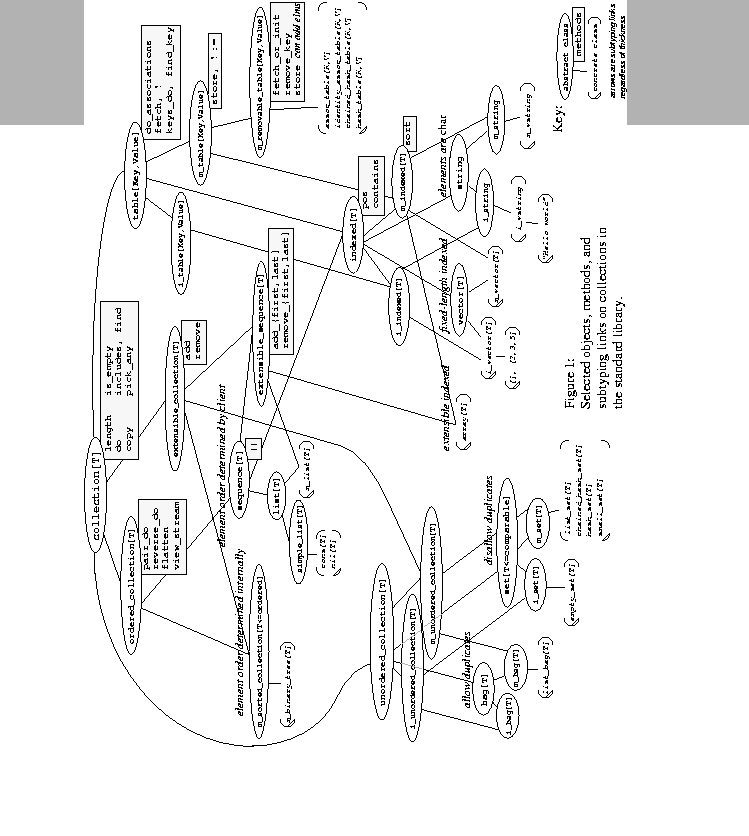
In collection.cecil:
Collections are groups of elements. We first introduce abstract interfaces, describing and refining various kinds of collections and their operations. We then shift to discussing concrete implementations which can be instantiated and manipulated at runtime.
There are three major families of collections: unordered collections (like bags and sets), ordered collections (e.g., lists), and tables (or keyed collections). Indexed collections like arrays, vectors, and strings are both ordered collections and keyed tables, where the keys are integer indices.
Abstract collection classes typically come in three versions: generic,
immutable, and mutable, with the latter two indicated by i_ and m_
prefixes. For example:
There are three varieties of mutation: replacement (removing one element
but inserting another in its place), insertion (increasing the
collection's size), and deletion (making the collection smaller). The
latter two capabilities are captured by the abstract
extensible_collection[T] and removable_collection[T] objects, which
may be inherited by mutable objects.
Separating the read-only from the read-write interfaces (e.g.,
unordered_collection vs. m_unordered_collection) supports useful
subtyping relationships among the read-only interfaces. To support the
most reuse, the generic read-only interface should be used as a type
declaration whenever possible. Only if mutation is required should the
mutable subtype interface be used. The immutable interface must be
distinguished from the generic read-only interface because the mutable
interface cannot be a subtype of the immutable interface, considering the
behavior specification implied by the immutable interface.
For a given abstraction, e.g.,
indexed, both the immutable and mutable
versions containing elements of type
T (or subtype of
T) subclass the
generic version with elements of type
T or any supertype of
T.
In addition, the immutable version, i_indexed[T], is a subtype of any
immutable collection (of the same kind) of a supertype of
T:
In contrast, a mutable version of a type
T has no subtyping relation
to a mutable collection with a different element type, e.g.,
m_indexed[int] is unrelated to m_indexed[num] : m_indexed[int] cannot
have floats stored in it (unlike m_indexed[num]), and so
m_indexed[int] is not a subtype of m_indexed[num]. Also, m_indexed[num]
can contain things other than
ints and reveal this through
do,
pick_any, etc. (unlike m_indexed[int]), so the reverse subtyping
relation doesn't hold, either.
Finally, the immutable and mutable versions subclass those of the abstraction higher in the class hierarchy: